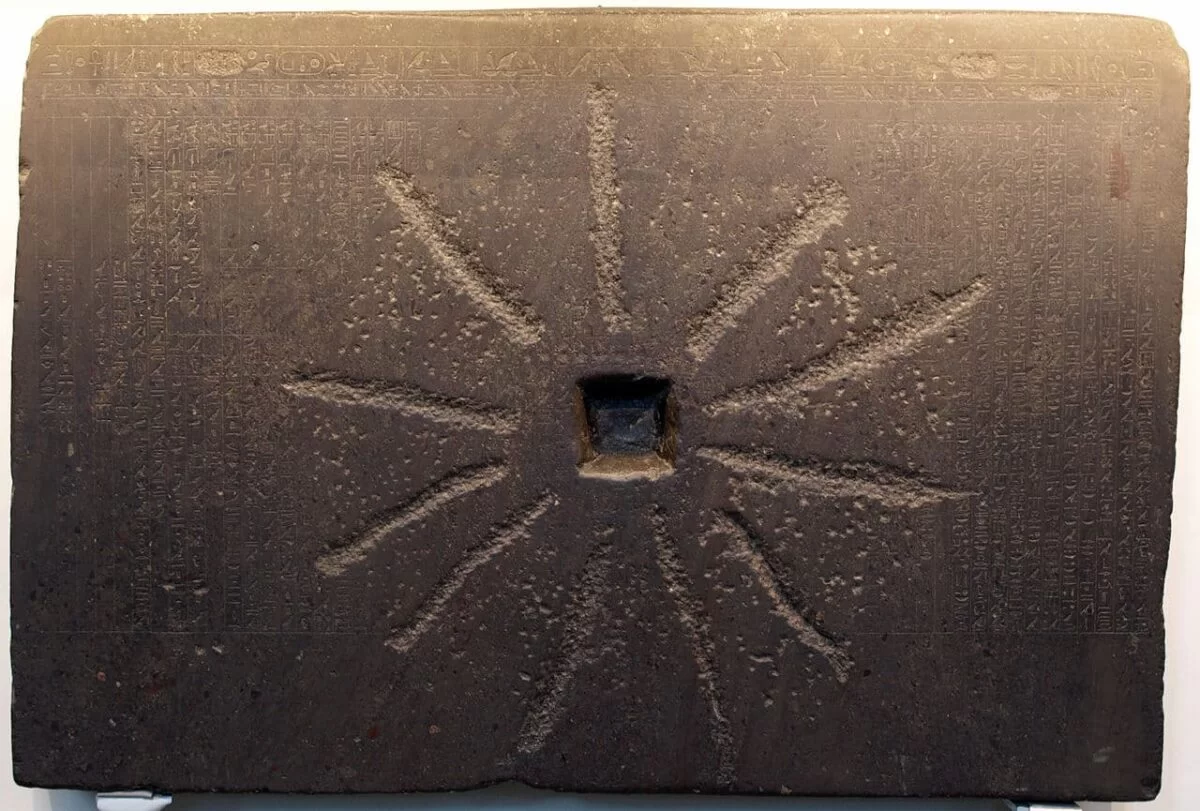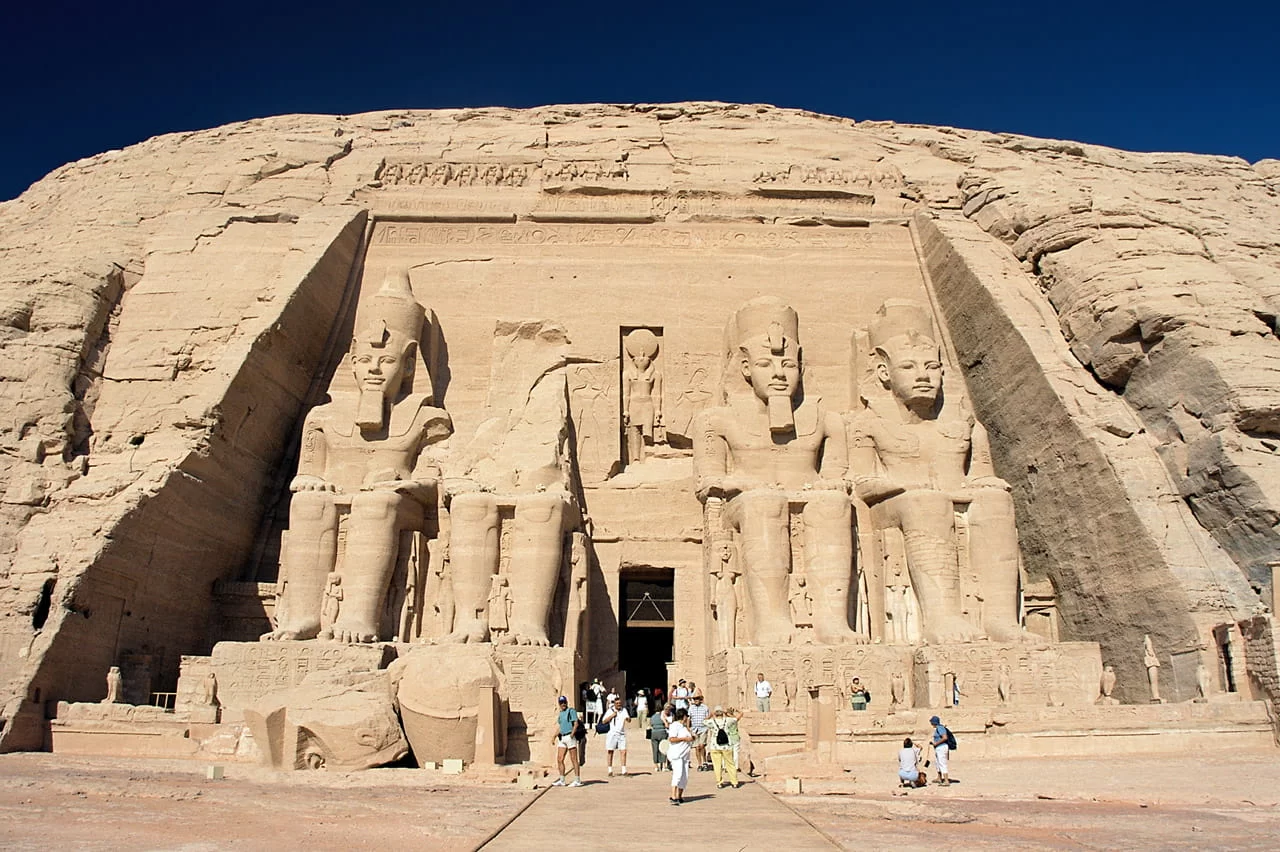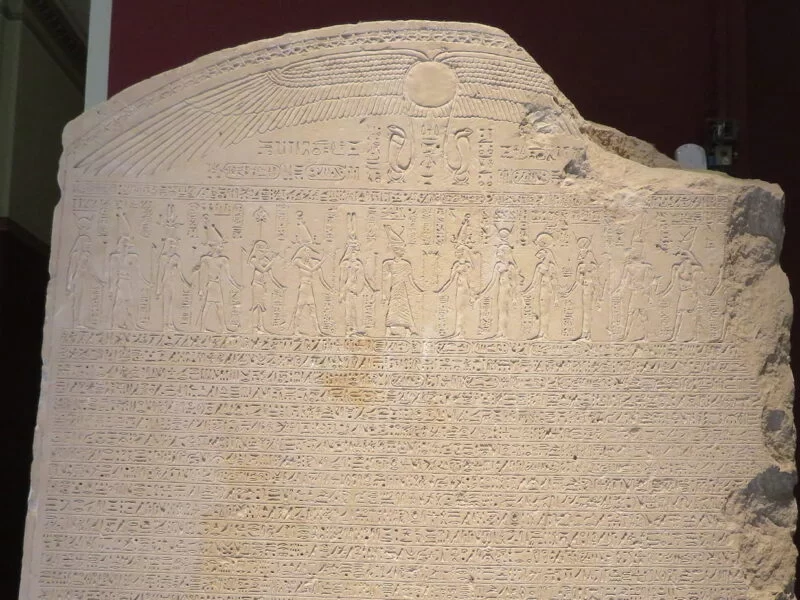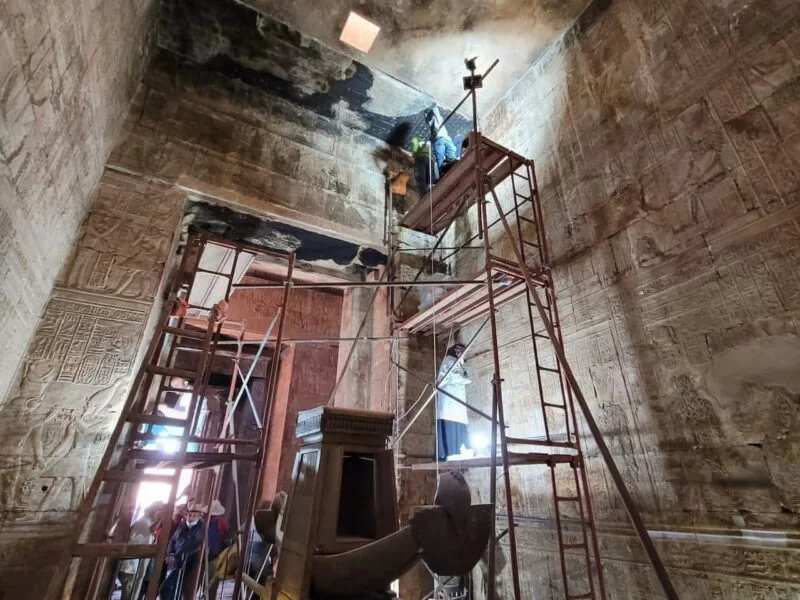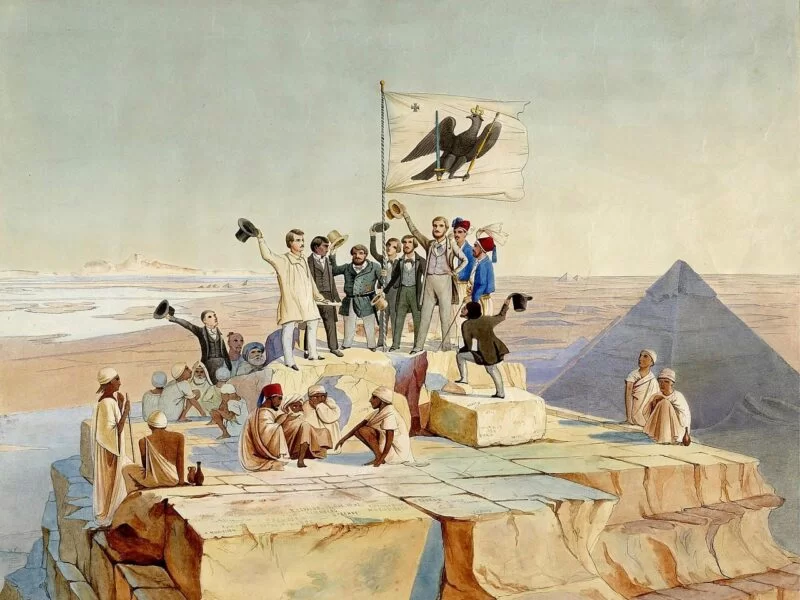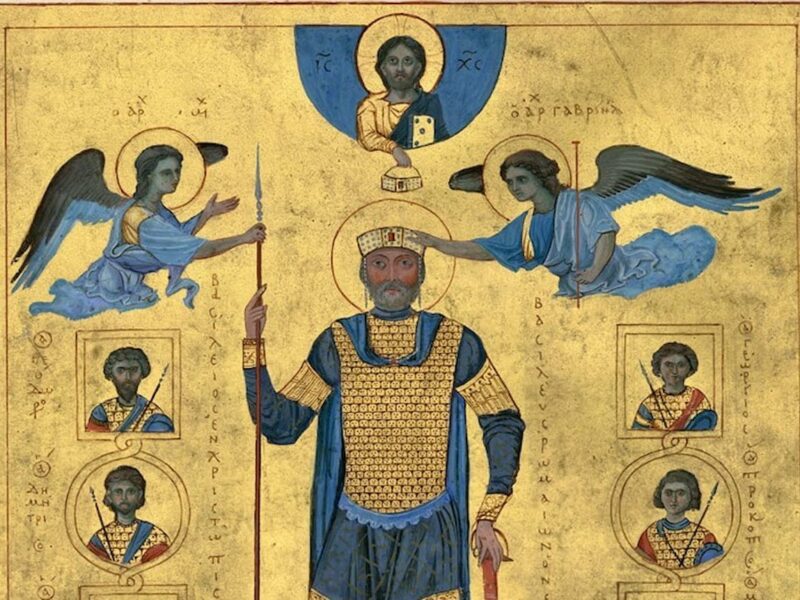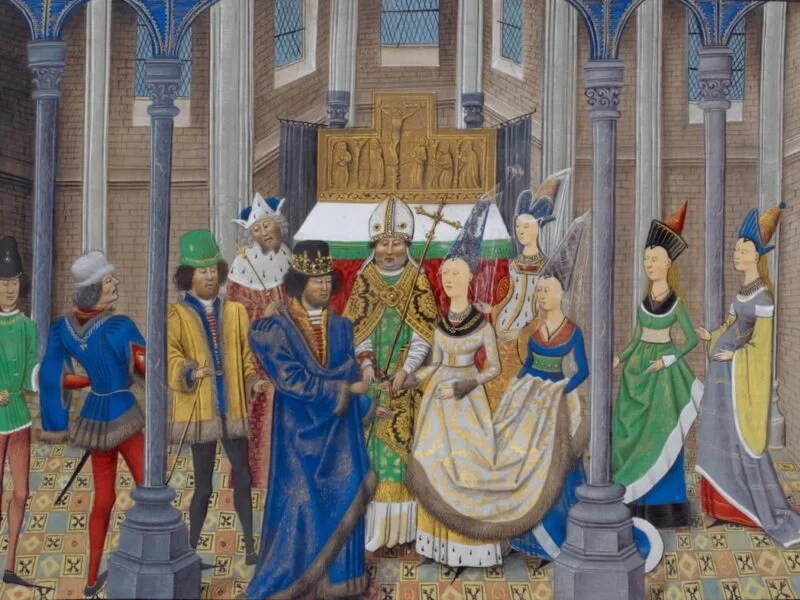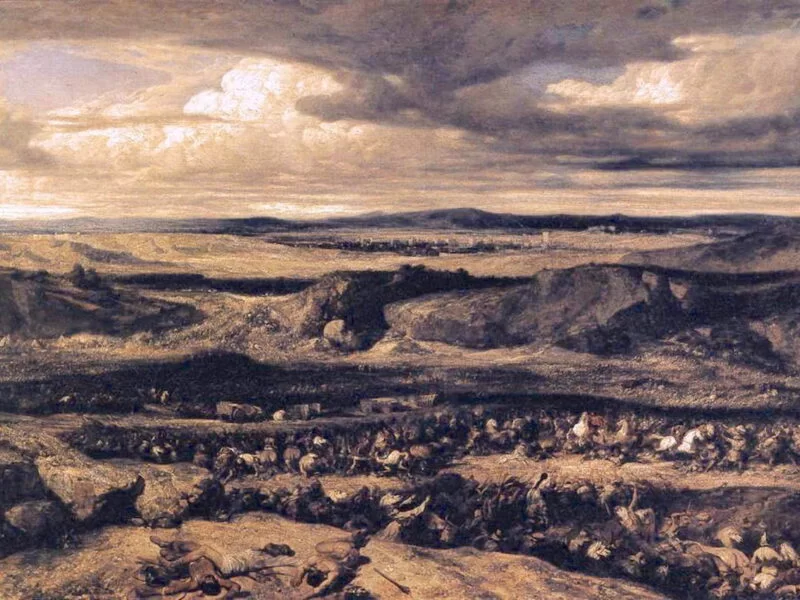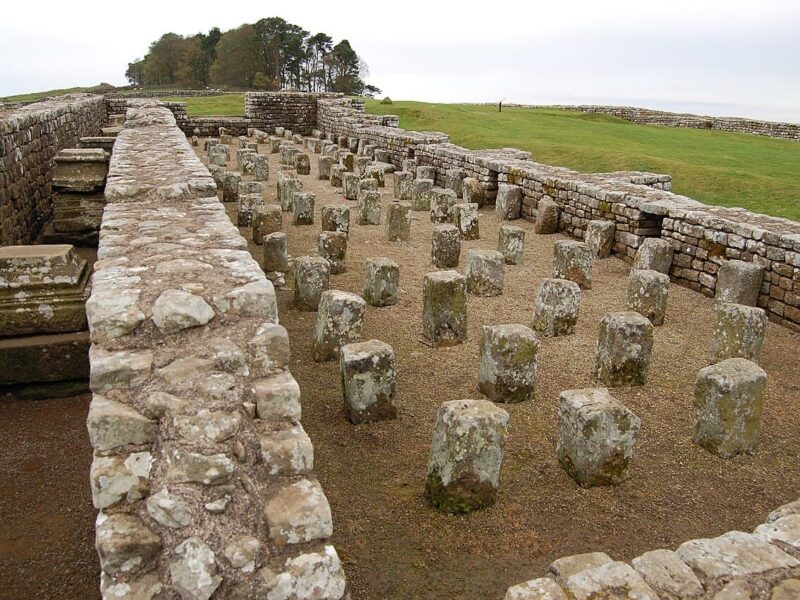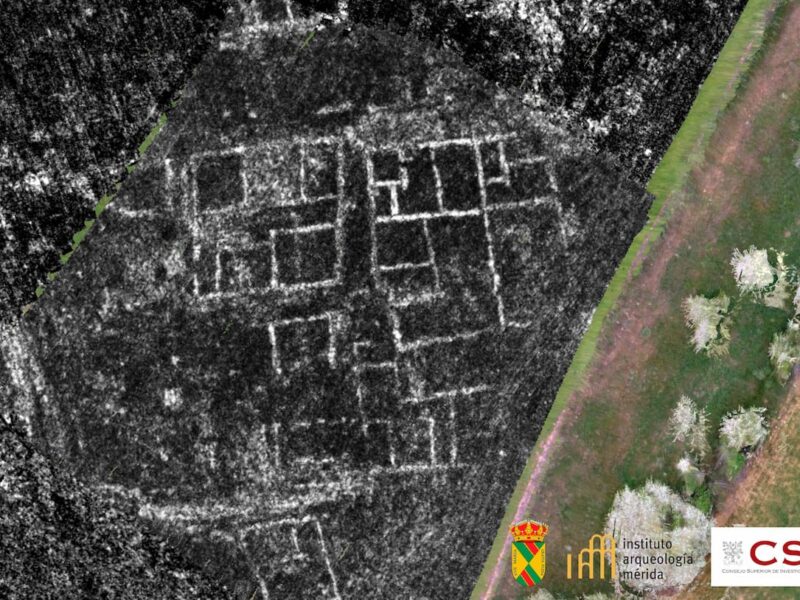The Shabaka Stone is a granite slab from the 25th Egyptian Dynasty, housed in the British Museum, containing the Memphite theology that regarded Ptah as the supreme god and creator. Ptah was the “master builder”, the inventor of masonry, and the patron of architects and craftsmen. According to some specialists, this is the most notable document of Egyptian thought that has survived to this day.
With its imposing dimensions of 95 centimeters in height and 1.37 meters in length, the Shabaka Stone has captivated Egyptologists and scholars since its discovery in the ruins of Memphis in 1805. It was erected as a lasting monument in the Great Temple of Ptah in Memphis in the late 8th century B.C.
Its surface, a stone canvas covering a rectangle of approximately 67 by 153 centimeters, is covered with hieroglyphics that tell a fascinating story of creation, divine power, and royal legitimacy.

The rectangular hole in the center measures 12 by 14 centimeters, with eleven radial lines of 25 to 38 centimeters in length, which destroyed part of the inscription, likely due to its use as a millstone or as the foundation of a column or pillar at some point in antiquity.
The story of the stone begins with Pharaoh Shabaka, who reigned between 716 and 702 B.C. According to the inscription, during a visit to the temple of Ptah, Shabaka found an ancient scroll devoured by worms. Horrified by the possibility of losing this valuable text, he ordered that the remaining content be engraved on the stone, thus ensuring its preservation.
However, the stone raises as many questions as it answers. Egyptologists and scholars have debated for decades the true antiquity of the original text that Shabaka ordered to be copied. Estimates vary dramatically, spanning more than 2,000 years. Some experts, such as Kurt Heinrich Sethe, initially suggested that the text could date back to the Old Kingdom, or even earlier periods. Others, like James Henry Breasted, the first to read its content, placed it in the New Kingdom or shortly before.

Friedrich Junge proposed in 1973 that the text on the Shabaka Stone might not be a copy of a millennia-old document, but rather an original creation from the 25th dynasty, with the archaic elements of the text being a deliberate exercise in archaism, a typical feature of the late Egyptian dynasties’ fondness for the ancient past.
Under this new perspective, the narrative about the discovery of the worm-eaten papyrus takes on a new meaning. Far from being a simple historical account, it could be a “discovery legend”, a literary strategy meant to grant greater authority and weight to the text’s content, presenting it as the “work of the ancestors”. This technique would not only validate the theological content of the document but also serve to legitimize the newly established Kushite dynasty, directly linking it to Egypt’s glorious past.
The controversy over the dating of the original text is not the only mystery surrounding the Shabaka Stone. The direction of reading the inscription has been the subject of intense debate among specialists. Although the hieroglyphics face to the right, which would normally indicate a right-to-left reading, many scholars, following James H. Breasted, have adopted a retrograde reading, starting from the left.
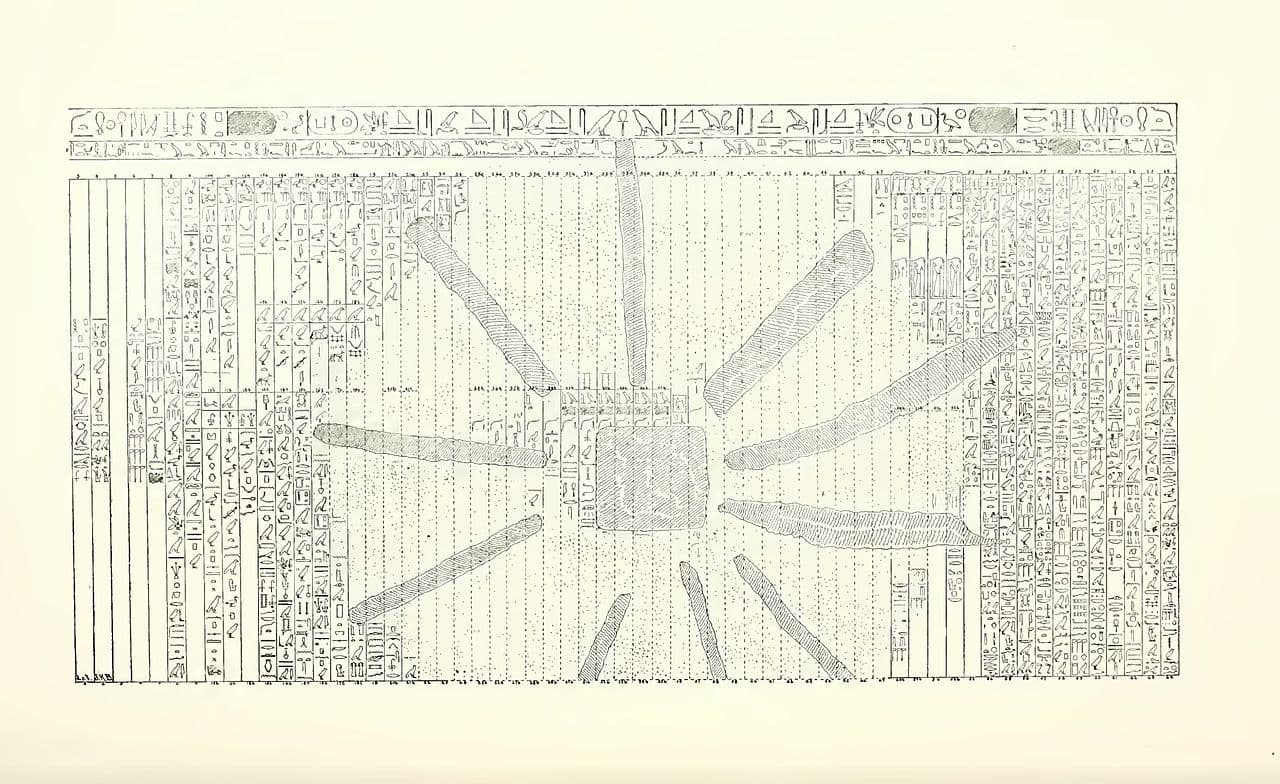
The inscription’s content is extraordinarily rich. At its core, it presents a sophisticated theology that places Ptah as the supreme creator, even preceding pre-existence itself. According to the text, Ptah creates the world through the “heart and tongue”, that is, through thought and speech.
The inscription narrates how Ptah first conceives the world in his mind before bringing it into existence through spoken words. In this cosmogony, the heart plays a crucial role as the organ that conceives creation, plans it, and creates the hieroglyphics as a means to record in writing the form of the objects he invents.
It begins with the pharaoh’s titulature, arranged symmetrically. The first line invokes the gods Ptah and Sokaris and declares: Horus, the unifier of the two lands, Nebty, unifier of the two lands, Horus of gold, unifier of the two lands, king of Upper and Lower Egypt, son of Ra Shabaka, beloved of Ptah-south-of-the-wall (or Sokaris-south-of-the-wall), who lives forever like Ra.

The second line describes the inscription as a copy of a corroded text found by Shabaka in the temple of Ptah in Memphis: His Majesty Shabaka wrote this text anew from the temple of his father Ptah-south-of-his-wall. His Majesty found the work of his ancestors devoured by worms, and since it could no longer be understood from beginning to end, he recopied it anew and better, so that his name would persist forever and the monuments of the temple of his father Ptah-south-of-the-wall would endure eternally. Made by the son of Ra Shabaka for his father Ptah-Tatjenen, that he may give life forever.
Lines 48 to 64 present Memphite theology and the creation myth: Thus it is said of Ptah: “The one who made everything and created the gods”. And he is Ta-tenen, who gave birth to the gods, and from whom all things came: food, provisions, divine offerings, and all good things. Thus it is recognized and understood that he is the most powerful of the gods. Thus Ptah was satisfied after making all things and all divine words… Indeed, Ptah is the source of life for the gods and all material realities.
In addition to its theological content, the Shabaka Stone also addresses themes of political legitimacy and royal succession. The text describes the resolution of the dispute between Horus and Seth, with Geb acting as the divine judge and proclaiming Horus as the legitimate heir to the throne of Egypt. This narrative not only recounts a fundamental myth of Egyptian religion but also serves as a powerful declaration of political legitimacy, particularly relevant for a foreign dynasty like Shabaka’s.
This article was first published on our Spanish Edition on October 11, 2024: La Piedra de Shabako, el más notable documento del pensamiento egipcio conservado, que cuenta el mito de la creación
SOURCES
Bodine, Joshua J. The Shabaka Stone: An Introduction. Studia Antiqua 7, no. 1 (2009)
Finnestad, R. B. (1976). Ptah, Creator of the Gods: Reconsideration of the Ptah Section of the Denkmal. Numen, 23(2), 81–113. doi.org/10.2307/3269662
M. Lichtheim, tr., The Shabaka Stone: “The Memphite Theology”
Wim van den Dungen, On the Shabaka Stone
Wikipedia, Piedra de Shabako
Discover more from LBV Magazine English Edition
Subscribe to get the latest posts sent to your email.

